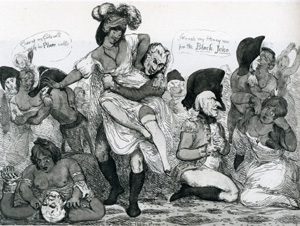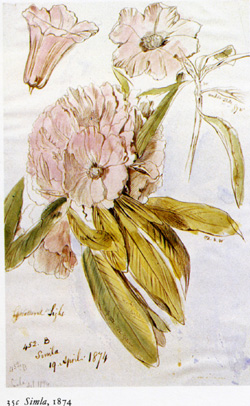
Robert Langston
langstonrob@juno.com
EAST IS EAST
“Oh, East is East, and West is West, and never the twain shall meet, …”
Ballad of East and West , Rudyard Kipling
Having grown up in Colonial British India, Kipling recognized the immense and multileveled gulf between the two great cultural paradigms. From this poem about a British soldier and a horse thief, those who conclude the ultimate incompatibility of Eastern and Western worlds often quote this line to express their point, but don't cite Kipling's ending verse,
“Oh, East is East, and West is West, and never the two shall meet,
Till Earth and Sky stand presently at God’s great Judgement Seat;
But there is neither East nor West, Border, nor Breed, nor Birth,
When two strong men stand face to face, tho’ they come from the ends of the earth.
Discussion:
-
1) Who was Rudyard Kipling?
2) What does Kipling mean by East and by West?
3) What does he seem to be saying about East and West in relation to each other?
4) Why would he or anyone say this?
5) Describe who represents East, and describe who represents the West? Is this about a good guy and a bad guy?
6) Having read, “Ballad of East and West”, how has the problem of this presumed cultural incompatibility been resolved within the poem?
7) If the roles were reversed, would we come to the same conclusion?
Kipling alludes to an ideal quality of mankind in which the barriers and distances which divide men disappear. It is a problematic vision to accept in today's discussion, because the quality he points to in the narrative of his ballad is realized through a conflict that ultimately gets resolved by establishing a dominant and subordinate coexistence. Kipling loved both realms of the East and West of which he was familiar with. But paradoxically Kipling assumed that only a system like the colonial hierarchy (in which he was favorably positioned) could ground the possibility for “two strong men” of entirely different worlds to “meet face to face”.
From times as early as Kipling and before, attempts have been made on the part of the West to integrate, absorb or merge with the East. In most cases, some more obviously than others, we find the same contradictory trap that Kipling, along with the rest of the British Empire, fell into. Many of today’s scholars view the Western past’s art, literature, history and studies of the East as being anchored in Orientalism, both a product of and justification of imperialism. Some historians like look at the maps, scientific illustrations and visual materials generated during colonial periods to understand ideologies and perspectives of the past. Daniella Bleichmar has recently gained attention for her work in this area to better understand the colonization of the Americas.
".....Bleichmar has pieced together how naturalists and artists working for the Spanish Crown surveyed flora in America and took what they learned back to Europe; how their images helped the empire in its search for supplies of coffee, tea, cinnamon, pepper, nutmeg and medicinal specimens; how their keen observations earned them favor with rulers and their ministers; how their omissions—of indigenous people, of wider landscapes—reflected the colonizers' attitudes toward the colonized."
We can get a glimpse of the atitudes and perceptions of people during this time by looking at the visual culture of the day:
Tipu Sultun staunchly resisted British conquest and was known by Britishers as the ‘Tiger of Mysore’. His character played a prominent role in the imperial narrative to shape noble cause for his defeat. Numerous depictions of events related to Tipu Sultan were created to unify public opinion about him and anyone who opposed British rule. He was eventually defeated by Lord Cornwallis in 1897.
Death of Tippoo
Both romanticized images, such as with exotic and sweeping landscapes and illustrations documenting the natural fauna helped map the western imagination upon the reality of the colonial environment.
Kotekangra
Simla, Ed Lear
Kangchenjunga
The image of the tiger figured prominently in symbolizing the power and dangerous nature of Eastern lands.
Tiger Hunting in 1903
Tiger hunting was a popular activity enjoyed among the colonials. By the year 2000, figures put the tiger population of India near 40,000. It is estimated that tiger populations have declined 95 percent over the past 100 years because of hunting and human encroachment...
Periodicals and journals also portrayed the people of lands that the British Empire colonized.
Journals back home described the heroic adventures of countrymen abroad and gave details about the peoples and customs of native inhabitants.
Definte images and portrayals gave colonials an entertaining way of comprehending colonized people in terms of their behaviors, their ethnic and racial types, even though these representations were often exagerrated, lacked any basis in fact, or generalized to the point of absurdity.
The children's book, Little Black Sambo, described the adventures of a child in India, where African, African American and Indian stereotypes disturbingly blend together.
Discussion:
1) Compare some of the images above. Find similarities and differences and describe them.
2) What do images from tiger hunts communicate? To what audience is the message directed?
3) How are westerners portrayed? How are Indians portrayed?
4) Is it obvious when visual material is presented as documentation, satire, or exagerration?
5) What about when factual material is appropraited to embellish misrepresentation?
Walton Ford is a contemporary artist who uses the imagery of colonial visual culture to reverse or turn upon itself the narrative content of the subjects he portrays and stories he illustrates.








![P.H., "Joe Could Not Remove His Eyes from the Animal before Him" [Cover], Chums (Vol. VI, no. 310) 1898.](eastiseast/images/chumscover2a.jpg)
![Tom Browne, "Shot Graham Travers Head Foremost over the Edge of the Cliff!" [Cover], Chums (Vol. VI, no. 263) 1897.](eastiseast/images/chumscover1a.jpg)


